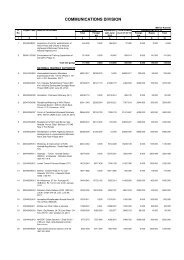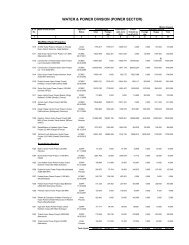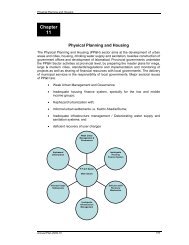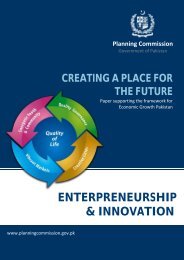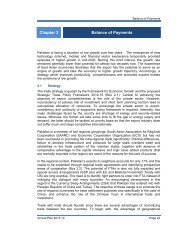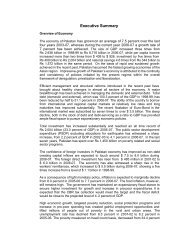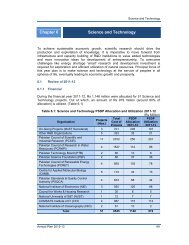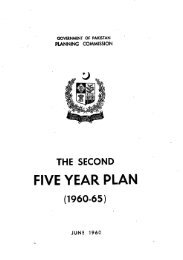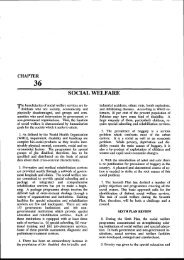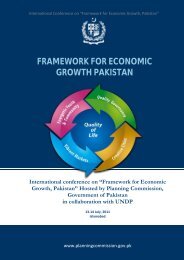Manual for Development Projects - Planning Commission
Manual for Development Projects - Planning Commission
Manual for Development Projects - Planning Commission
You also want an ePaper? Increase the reach of your titles
YUMPU automatically turns print PDFs into web optimized ePapers that Google loves.
Chapter 4<br />
(d) Availability of land; time taken in its acquisition.<br />
(e) Time to be taken in the land development, keeping in view its topography and construction of access<br />
road.<br />
(f) Availability of professional and technical manpower.<br />
(g) Availability of materials, supplies and equipment.<br />
(h) The implementation schedule should be based on Bar Charts/PERT/CPM and should essentially <strong>for</strong>m<br />
part of every project document.<br />
(i) Project Evaluation and Review Techniques (PERT), Critical Path Method (CPM) or Bar Charts be<br />
prepared to help implementation of the project according to the plan. A model copy of each of these<br />
techniques to be adopted by the sponsoring agencies concerned is enclosed (Annexure-XVIII).<br />
Appointment of Consultants <strong>for</strong> Project Preparation, Detailed Designing and Tender Documents.<br />
4.20 The fundamental policy of the Government in the matter of preparation of a development project is to<br />
ensure that it is prepared with the utmost care and skill in accordance with the requisite economic, financial<br />
and technical standards, and keeping in view the objectives and targets laid down in the five year plan. In<br />
case local expertise is not available, <strong>for</strong>eign experts/consultants can be employed to prepare projects which<br />
are technically and economically viable. Ef<strong>for</strong>ts are going on to develop local consultancy but, in case of<br />
sophisticated projects involving new technology, <strong>for</strong>eign consultants have to be appointed. Most of our<br />
large projects are <strong>for</strong>eign-aided and engaging <strong>for</strong>eign consultants is made part of the aid. However,<br />
Government have recently decided that 30 percent of the expenditure to be incurred on <strong>for</strong>eign consultancy<br />
should be diverted to the development of local consultancy. This requirement was first made mandatory<br />
but later it was decided that it may not be applied rigidly and would be subject to the technical needs and<br />
availability of local consultants with requisite qualifications and experience (Please see Annexure VI &<br />
VII). In order to give preference to local consultants, relevant extract of Prime Minister's Order dated 7th<br />
November, 1993 is as follows:-<br />
"The Pakistani consultants and engineers be given full opportunity and they should be the first to be hired<br />
<strong>for</strong> projects <strong>for</strong> consultancies in Pakistan be<strong>for</strong>e hiring any <strong>for</strong>eigners. The decision of the ECC <strong>for</strong> a<br />
minimum of 30% award of consultancy contract to local consultants may be strictly en<strong>for</strong>ced".<br />
4.21 In the TOR of consultants, whether local or <strong>for</strong>eign, when appointed <strong>for</strong> the preparation of a project,<br />
it is to be made incumbent, that in addition to the scope, technical viability of the project etc., they have<br />
also to provide the implementation schedule supported by a Bar Chart, CPM, PERT, etc.<br />
Economic Benefits<br />
Page 9 of 11<br />
4.22 The economic aspects of a proposed project/sector/ programme contribute significantly to the<br />
development of the economy through backward/<strong>for</strong>ward linkages. The benefits of the projects could be:<br />
http://hd2/pc/popup/ch4_p.html<br />
9/23/2010




